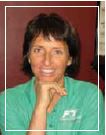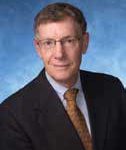Don’t take it for Granted

by Paula Allia
PT, DHSc, MTC, OCS
It seems that the older one gets, the quicker life passes by. It is time to learn how what we had when we were born has developed. The aging person needs to work at keeping up with stimulating their neuromuscular system to not revert backwards. Let me briefly explain. When a baby is born there are no purposeful movements.
A baby cannot immediately reach or turn over. A normal baby is born with certain reflexes that dominate what they are capable of doing in certain positions. Their initial movements serve no purpose. There is a developmental sequence that needs to occur as the neuromuscular system matures. It is fascinating to watch the progression as neuromuscular maturation advances.
In the womb a baby is in a c-shaped position. This position puts some muscles in a shortened position and others on a stretch. The baby is dominated by the reflexes they have. As the infant develops they put some of these stretched muscles into a shortened held resisted contraction like when they are on the stomach and they arch up and their neck and or back muscles shorten. This just happens with a normal infant.
In order for this development to occur, the infant needs to mediate the reflexes they had when they were born. They do not simply go away but as the brain develops the infant can overcome the reflexes and start to perform
purposeful movements. They learn to hold their heads up, reach for a bottle and roll over. It is indeed intriguing how the developmental sequence advances. Why is this important?
Well, normal babies can overcome these reflexes while some cannot. Most actually reach the ultimate level
of skills in various positions. For example, if an infant on their back can reach up and cross the midline with their arms. Another example is an infant that can perform reciprocal crawling versus hopping like a bunny. Yet,
another example of not overcoming this is a severe affected cerebral palsy baby. The developmental sequence is delayed and sometimes cannot be mediated.
We are all born with these reflexes and the majority of us can develop where they are no longer dominant, but are still present in the background. What seems to happen with some is that start in this c-shaped curve at
birth and later in life develop similar weakness in the sets of muscles that were stretched at birth…interesting. Is it possible perhaps, that the reflexes surface a little more with age?
On top of that our habits nowadays with electronic devices many times put us even more susceptible to the same weaknesses. We are also wired with connections to the right and left sides of the body. Some people move better in a reciprocal manner while others cannot. Some people do better with bilateral motions. It is important to know your body and see how you function best.
As with an infant, it is important to work on the muscles that provide us purposeful movements. Prevent yourself from reverting back to the c-shape that you once had. Working on postural muscles that keep us in the best positions to perform activities needs to be implemented in your daily routine and in your exercise workouts.
Balance is key to your neuromuscular stability. Many times bilateral strengthening and positioning works best to develop some core isometric performance. Once the core muscles are more developed, challenge them with unilateral movement and balance activities. Keep the neuromuscular system fresh by challenging it. Recognize your deficits and work on improving them. It is a lot easier to keep yourself going that to have to get it back.
However, if you find you are struggling to get back to where you think you should be, seek out an expert to help you. It is never too late to start a program that can be designed for you based on your individual needs.
Here’s to your Health!
Fitness Together
335 14th Ave South
Naples, FL 34102
239.263.9348
FitnessTogether.com/Naples



Leave a Reply
Want to join the discussion?Feel free to contribute!